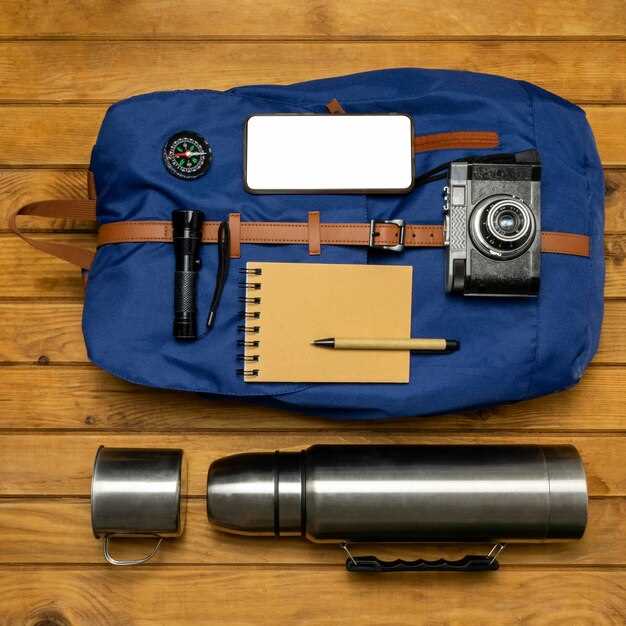
For adventure seekers and outdoor enthusiasts, embarking on an off-road road trip can be one of the most exhilarating experiences. However, whether you are traversing rocky terrains, muddy paths, or steep inclines, having the right gear is essential to ensure safety and comfort. This article delves into the must-have gear that will not only enhance your off-roading experience but also prepare you for unforeseen challenges on the trail.
In the world of off-roading, being prepared can make the difference between a thrilling adventure and a potential disaster. Essential equipment not only protects your vehicle but also provides crucial support for the occupants during unexpected situations. From recovery tools to navigation systems, each piece of gear serves a distinct purpose in enhancing your off-road journey.
Understanding the specific requirements of your trip will enable you to select the most suitable equipment. Whether you are venturing into the desert, tackling rocky mountain passes, or exploring dense forests, having the right supplies ensures you are ready for anything. Let’s explore the essential off-road gear that every adventurer should consider bringing along for the ultimate road trip.
Choosing the Right Tires for Varied Terrain

Selecting the appropriate tires for off-road exploration is crucial for enhancing vehicle performance and ensuring safety on different surfaces. Each type of terrain requires specific tire features to maximize traction and durability.
For rocky and uneven surfaces, tires with reinforced sidewalls and aggressive tread patterns are essential. These tires provide the necessary grip and protect against punctures. Look for models that offer deep voids to allow debris to escape, preventing tire slippage and maintaining grip.
In muddy conditions, opt for tires equipped with large, widely spaced lugs. This design helps to channel mud away from the tire surface, reducing the risk of getting stuck. Additionally, softer rubber compounds can improve traction in slippery conditions.
When encountering sand, tires designed specifically for soft terrain can make a significant difference. These tires are typically wider and feature a special tread pattern that helps distribute the vehicle’s weight more evenly, preventing it from sinking into the sand. Low tire pressure can also enhance performance in sandy environments by increasing the tire’s surface area.
For mixed terrains, all-terrain tires are a versatile choice. They provide a balanced performance, offering adequate traction on both paved roads and off-road adventures. Look for all-terrain tires with a moderate tread depth that can handle various conditions without compromising stability.
Finally, consider the climate and seasonal changes as well. In snowy or icy conditions, specialized winter tires with a unique tread design and softer rubber compounds are critical for maintaining control and safety.
Ultimately, investing in the right tires for the specific terrains you plan to explore will lead to a more enjoyable and safer off-road experience. Always consult with tire professionals to ensure the best fit for your vehicle and intended adventures.
Essential Recovery Tools for Off-Road Adventures

When embarking on off-road adventures, having the right recovery tools is crucial for ensuring safety and minimizing downtime in challenging terrains. Here’s a list of must-have recovery gear to keep your vehicle mobile.
1. Recovery Straps: A high-quality recovery strap is fundamental for towing or being towed. Look for straps made from durable materials with a minimum breaking strength suitable for your vehicle’s weight. Recovery straps stretch to absorb shocks, making them more efficient for soft ground conditions.
2. Winch: A winch is a powerful tool for extracting vehicles stuck in difficult spots. Choose a winch with a capacity that surpasses the weight of your vehicle, along with steel or synthetic rope. Ensure it has a reliable mounting system and a remote control for safe operation.
3. D-Rings and Shackles: D-rings, also known as soft shackles, are essential for connecting recovery straps, winches, and other equipment. Opt for forged steel D-rings for maximum strength and durability. They should have a shackle rating that meets or exceeds your recovery strap’s weight capacity.
4. Tire Recovery Traction Mats: These mats can be a lifesaver when your tires are stuck in mud, sand, or snow. Made from durable materials, they provide traction and support for your tires to regain grip and move forward. Portable and lightweight, they can be stowed easily in your vehicle.
5. Air Compressor: An air compressor is vital for adjusting tire pressure before and after an off-road excursion. Lowering tire pressure increases traction, while reinflating them upon returning to the road ensures optimal performance. Choose a model that can deliver adequate performance in a compact size.
6. Shovel: A sturdy, foldable shovel can assist in digging out tires or creating paths in loose terrain. A lightweight shovel is ideal for easy transport without occupying too much space. Look for models with a strong blade and a durable handle.
7. Jack: An off-road jack can lift your vehicle over obstacles or to change a tire in rugged situations. A hydraulic or bottle jack designed for off-road use is preferable, as it can handle uneven surfaces. Ensure it has sufficient lifting capacity to support your vehicle safely.
Equipping your off-road vehicle with these essential recovery tools can significantly enhance your adventure experience. It not only prepares you for unforeseen challenges but also ensures your journey remains enjoyable and safe.
Navigation Tools to Keep You on Track in Remote Areas
When venturing into remote areas, having reliable navigation tools is essential for a successful off-road trip. Here are some must-have tools that will ensure you stay on course and explore safely.
1. GPS Device: A dedicated GPS unit specifically designed for off-road use provides accurate maps, terrain details, and routing options suitable for less-traveled paths. Look for devices with features like topographic maps, waypoint marking, and robust battery life to handle extended adventures.
2. Smartphone Apps: Numerous apps are available for smartphones that function as GPS tools. Applications such as Gaia GPS or AllTrails offer detailed off-road maps, trail information, and offline capabilities. Make sure to download necessary maps before heading out, as remote areas might lack cell service.
3. Compass: Although electronic devices are helpful, a traditional compass is a trustworthy backup. Understanding how to use a compass in conjunction with maps can significantly enhance your navigation skills and serve as a reliable tool when technology fails.
4. Topographic Maps: Carrying physical topographic maps of the region you’ll be exploring is vital. They provide crucial information on elevations, water sources, and potential hazards. Familiarizing yourself with map reading can help you navigate even when electronic devices aren’t an option.
5. Waypoints and Routes: Before your trip, plan your route and set waypoints using your GPS device or mapping app. This advance preparation allows you to stay focused while exploring and ensures that you can find your way back to key locations, such as campsites or trailheads.
6. Terrain Mapping Software: Software that provides detailed terrain analysis can be invaluable for planning your journey. Use these tools to assess the difficulty of various routes, identify potential obstacles, and prepare for changes in terrain types.
7. Personal Locator Beacon (PLB): While not a navigation tool in the traditional sense, a PLB can be life-saving. In case of emergencies, activating this device sends out a distress signal to rescue services, ensuring that help can find you even in the most remote locations.
Using a combination of these navigation tools will provide you with confidence and enhance your overall experience while traversing remote landscapes. Always have a plan and be prepared for the unexpected.

